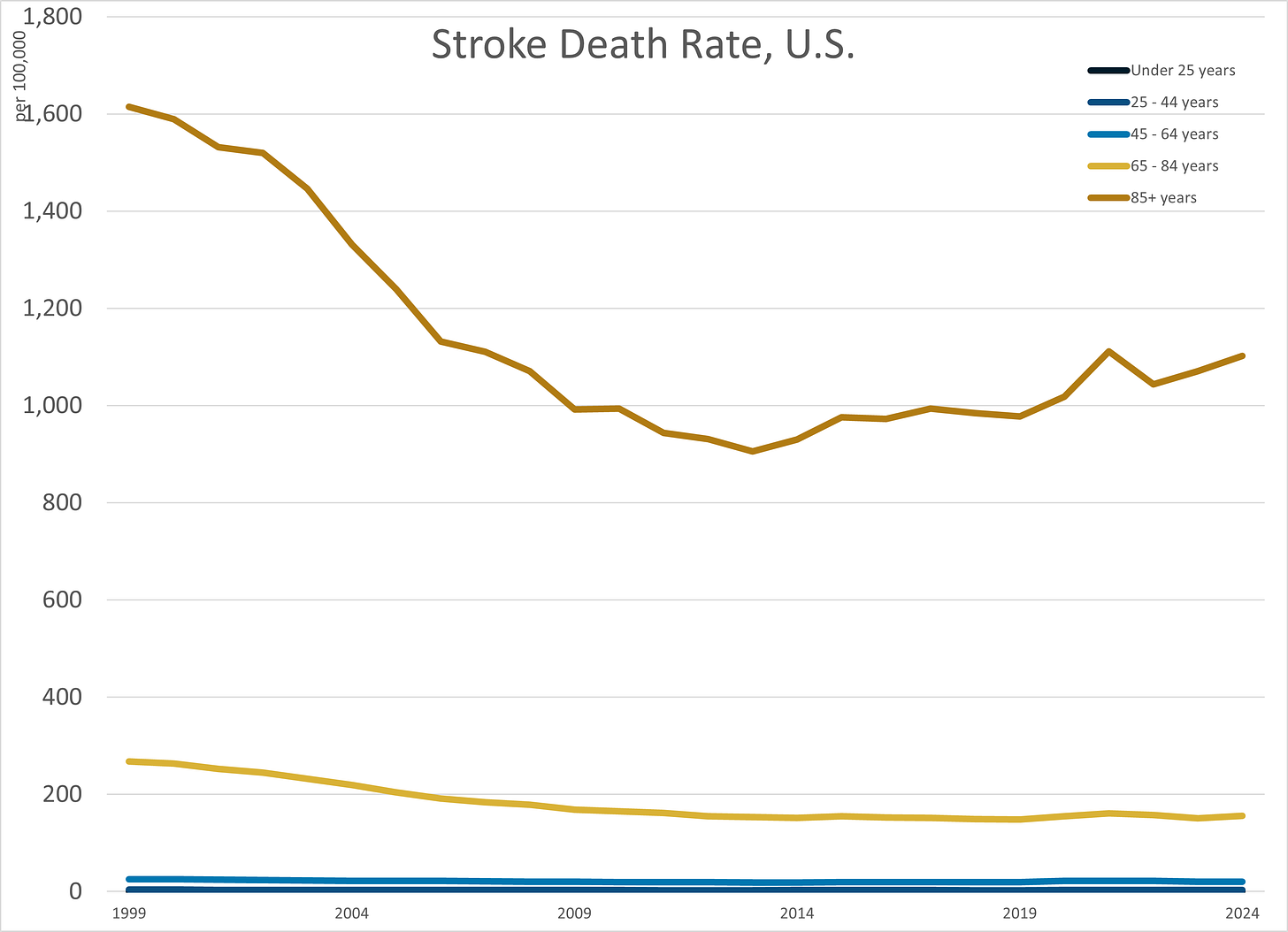RIP, Richard Chamberlain: Some Stats on Stroke Deaths in the U.S.
Stroke deaths have been increasing in rates for the elderly for some time
RIP, Richard Chamberlain.
30 March 2025, Richard Chamberlain, TV’s Dr. Kildare, ‘Shogun,’ ‘Thorn Birds’ Star, Dies at 90
Handsome leading man Richard Chamberlain, who came to prominence in the 1960s medical series “Dr. Kildare” and then became king of the miniseries with such ratings blockbusters as “Shogun” and “The Thorn Birds,” has died. He was 90.
Chamberlain’s death was confirmed to Variety by publicist Harlan Boll. The actor died Saturday, March 29 in Waimanalo, Hawai’i, of complications following a stroke, according to Boll.
“Our beloved Richard is with the angels now,” Martin Rabbett, Chamberlain’s longtime partner, said in a statement. “He is free and soaring to those loved ones before us. How blessed were we to have known such an amazing and loving soul. Love never dies. And our love is under his wings lifting him to his next great adventure.”
I will be getting to the mortality statistics in a moment, but first….
Last year, when people were cooing over the new Shogun show, Stu & I decided to watch the old Shogun miniseries… especially since I was a little kid when that ran (and I wasn’t allowed to watch it back then). I thoroughly enjoyed it.
What I was allowed to watch that Chamberlain was in was:
Woo! King Solomon’s Mines!
Yeah, I’ve never seen the Thorn Birds or Dr. Kildare.
I did see him as Aramis in the Musketeers movies, and I liked his take on Aramis.
But alas, here comes the life actuary to take advantage of the circumstances of his death to point out a worrying trend. Chamberlain died due to complications from stroke, at the age of 90.
Well, he is in the age group that has seen a poor trend for quite some time for this cause of death.
High-Level U.S. Stroke Death Rate Trend, 1999-2024
Before I get into the specific age groups, let’s take a look at the high-level age-adjusted death rate due to stroke (2024 data are provisional):
You can see the age-adjusted death rate bottomed out around 2013 or so, went sideway for a while, and rose through the pandemic.
I am not breaking out the distinction of “cerebrovascular” cause of deaths, but let us consider: if COVID had been killing via the creation of blood clots, and stroke is often precipitated due to blood clots… yeah. That’s an issue.
To be sure, there were some issues preceding the pandemic.
Breaking it out by age group:
You can see in this graph that the oldest age group had rising death rates due to stroke well before the pandemic. As I mentioned, a low point in death rates were reached in 2013, and then the rates started rising, well before the blood-clotting-COVID problems.
Tables for Long-Term and Short-Term Trends
For convenience, here are the cumulative changes in death rates by age groups over the full period:
Compared to 1999, the rates have all decreased. That’s the longer-term improvement.
But what about through the pandemic?
Here, there are small increases for younger age groups — and by younger, I’m keeping it to “younger than 85”.
The increase for much older seniors is substantial.
And these are rather large rates, unlike the situation we saw with brain cancer.
These numbers represent a 1% death rate in one year, which is substantial.
I know many people do not have a good gut feel for these things, but a 1% chance of death within a year is significant.









